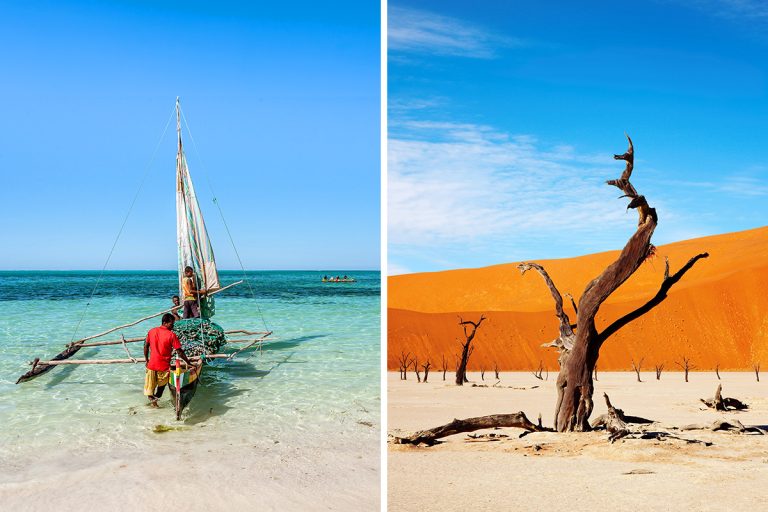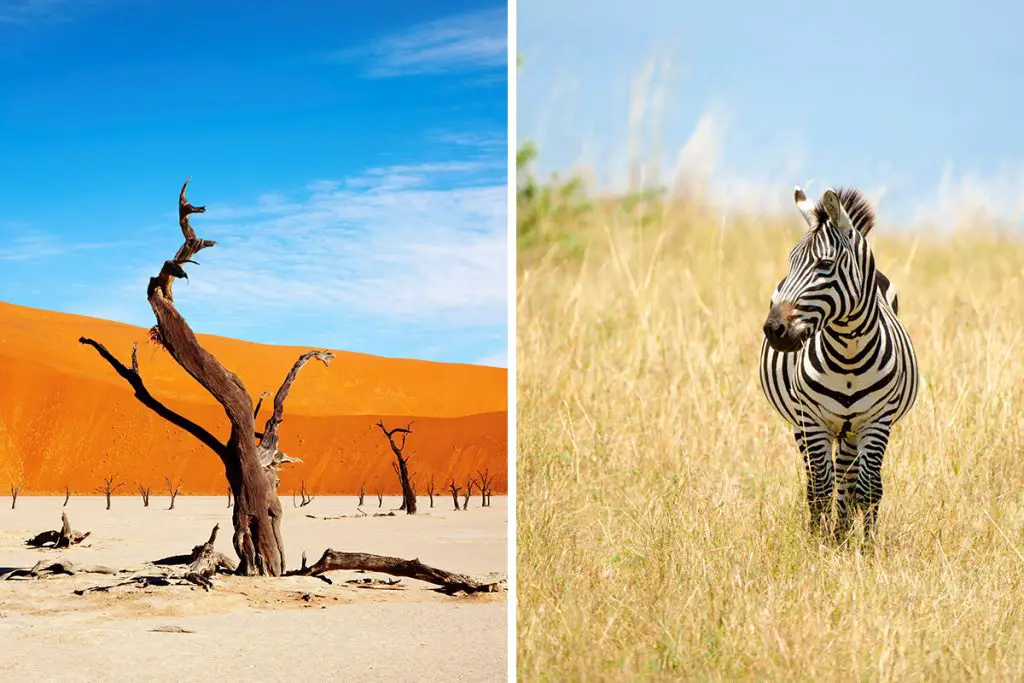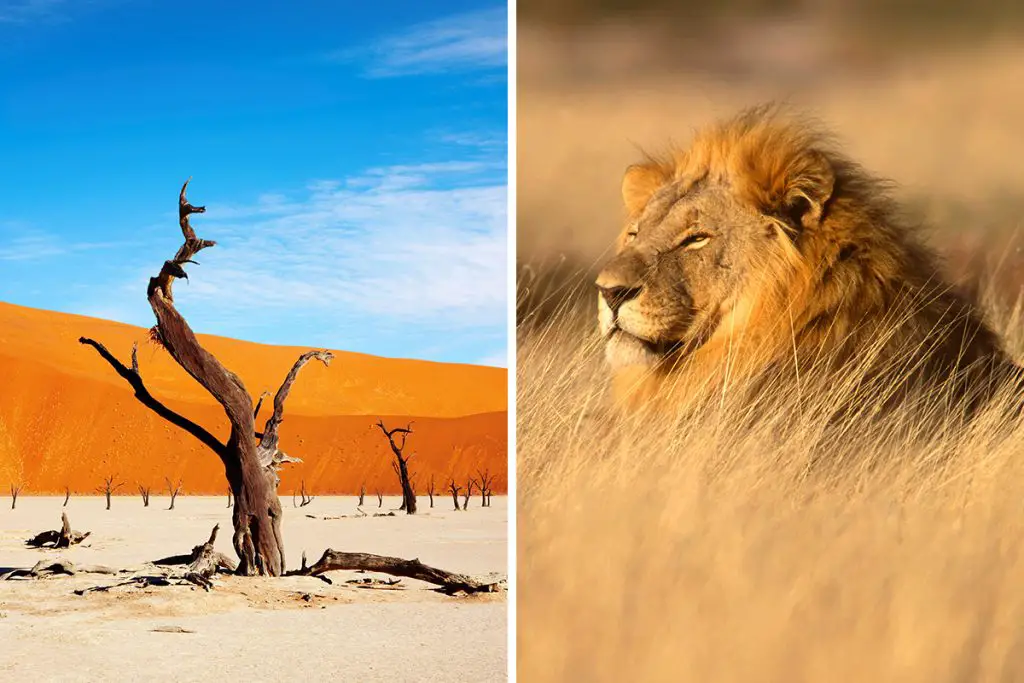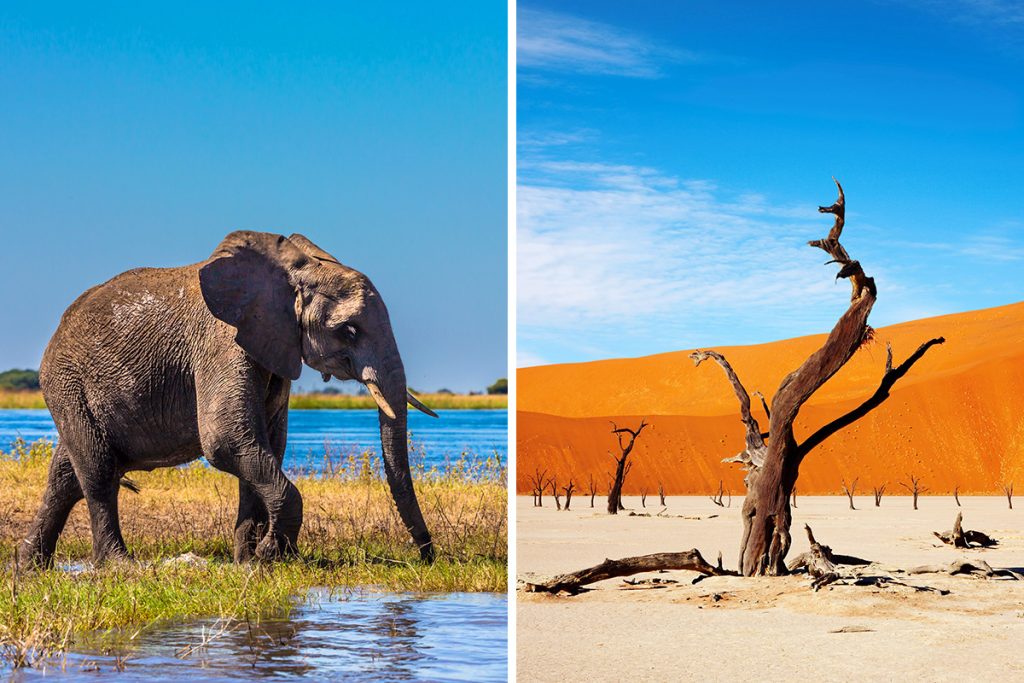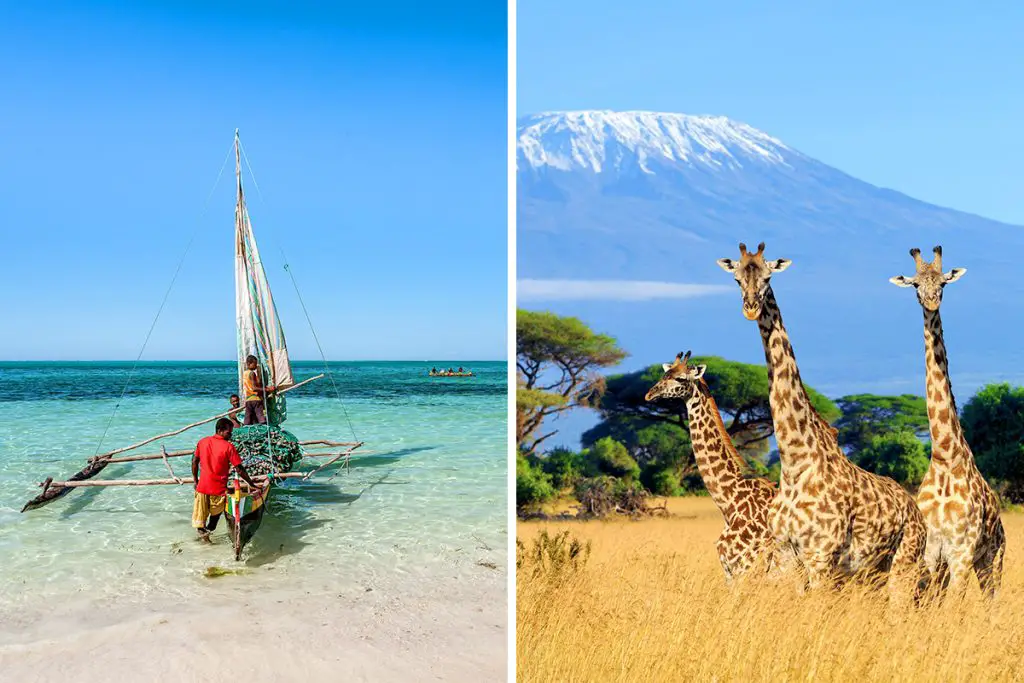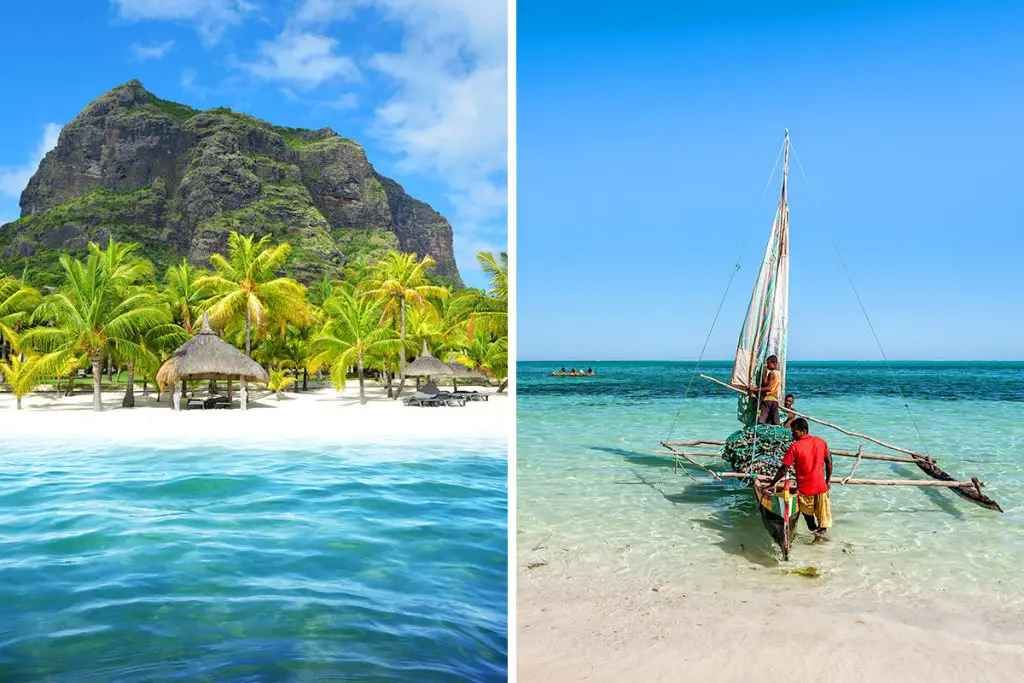Trying to choose your next destination can feel like solving a delightful puzzle. Mozambique tantalizes with its endless coastline, while Namibia presents an entirely different allure with its desert drama. So, how do you decide between two such varied and vibrant countries? Stick around, and let’s figure this out together.
History & Culture
First things first, let’s delve into the rich tapestry of history and culture that these countries offer. Knowing a little bit about the past can make your journey more meaningful. So, what sets Mozambique and Namibia apart?
Mozambique boasts a vibrant history that’s a blend of African, Arab, and Portuguese influences. Over the centuries, it became a melting pot of cultures, primarily due to its strategic location along the Indian Ocean.
The Portuguese left an enduring legacy that manifests in the architecture and language. You’ll find both modern and traditional art forms thriving, from intricate Makonde carvings to toe-tapping Marrabenta music.
Namibia, on the other hand, offers a unique mix of native cultures like the Himba, San, and Ovambo. German colonial rule also leaves its mark, especially in places like Swakopmund where German architecture stands alongside African tradition.
The nation’s history is more recent, gaining independence in 1990, but its ancient cultures give you a timeless sense of the land and its people. The art scene here is bold, often reflecting the vast landscapes and storytelling of its many tribes.
Both countries have successfully preserved their cultural heritage while embracing modernity. In Mozambique, you’ll experience the allure of African and Portuguese festivals, full of colorful costumes and rhythmic beats. Namibia, however, will introduce you to festivals that celebrate its diverse native cultures, complete with traditional songs and dances.
It’s impossible to pick a winner when both Mozambique and Namibia offer such rich and varied tapestries of culture and history. If a blend of African, Arab, and European cultures entices you, Mozambique might be your pick. But if the call of native traditions and a landscape steeped in ancient stories sounds irresistible, Namibia could be the one.
So there you have it. Whether you’re drawn to the melting pot of Mozambique or the rich tapestry of Namibia, your journey will undoubtedly be a feast for the soul. Choose the one that sings to your spirit and you can’t go wrong.
Attractions & Activities
If you’re yearning for a trip that’s more than just lounging on the beach, both Mozambique and Namibia offer a plethora of unique attractions and activities. From wild safaris to historical landmarks, each destination holds its own magic. So, which one’s for you?
In Mozambique, you’ll find a variety of attractions beyond its famed coastline. The Gorongosa National Park, for example, offers an unparalleled safari experience. Here, you can witness elephants, lions, and a myriad of bird species in their natural habitat.
The Niassa Reserve, another gem, is one of the last untouched wilderness areas in Africa and offers pristine wildlife viewing. Adventure seekers might enjoy canoeing along the Lugenda River for a change of pace.
Switch gears, and you find yourself in Namibia, a land of contrasting landscapes. A visit to the Namib Desert introduces you to one of the world’s oldest deserts. Opt for a hot-air balloon ride over the colossal dunes at Sossusvlei, or hike up Dune 45 to watch a mesmerizing sunrise.
The Etosha National Park is another must-see, especially for wildlife enthusiasts. It’s a haven for rhinos, elephants, and countless other species.
Mozambique delivers a more tropical setting, perfect for water-based activities like scuba diving and snorkeling in the Quirimbas Archipelago. This collection of islands is known for its coral reefs teeming with marine life. Namibia, however, tends to lure those interested in unique landscapes and a variety of land-based activities like dune bashing and rock climbing.
Each destination is endowed with its own set of wonders. If you’re an underwater explorer or a wildlife enthusiast leaning towards tropical settings, Mozambique could be your playground. On the other hand, if vast desert landscapes and unique geographical formations call out to you, Namibia is your stage.
In summary, whether you’re planning to go on a wild safari or explore the untouched corners of Earth, both Mozambique and Namibia have you covered. Your final choice comes down to what kind of backdrop you want for your adventures.
Beaches
Ah, the allure of a sandy shoreline! If you’re hoping to find the perfect stretch of beach, both Mozambique and Namibia have their own stunning options to offer. Let’s find out how these beaches can add some sparkle to your trip.
Mozambique is a beach lover’s paradise with over 1,550 miles (about 2,500 kilometers) of coastline along the Indian Ocean. Tofo Beach is known for its turquoise waters and ample opportunities for diving with manta rays. Bazaruto Archipelago, another stunning destination, offers more secluded beaches that are perfect for a quiet retreat.
Namibia, with its 976 miles (about 1,572 kilometers) of Atlantic coastline, provides a different beach experience altogether. Swakopmund and Walvis Bay are popular spots for unique activities like sandboarding and kite surfing. The Skeleton Coast, often shrouded in mist, provides a more moody and atmospheric beach setting.
In Mozambique, you’ll find warmer waters ideal for swimming and snorkeling, while the cooler Atlantic waters in Namibia are generally better suited for adrenaline-pumping water sports. The beaches in Mozambique often feature soft, white sand and clear, warm waters. Namibia’s beaches, however, are more rugged and often framed by dunes and rocky cliffs.
You see, both countries offer unique beach experiences. If you’re looking for warm, tropical beaches with clear waters, Mozambique could be the place for you. But if you prefer beaches that offer a sense of adventure and a dramatic backdrop, Namibia has exactly what you need.
To wrap it up, both Mozambique and Namibia provide unforgettable beach experiences, but in different flavors. Mozambique brings tropical splendor to the table, while Namibia offers more rugged and adventurous options. The choice depends on your personal beach vibe!
Eating, Drinking & Nightlife
Food and drink often serve as the backbone of a vacation, and the nightlife can be the cherry on top. Both Mozambique and Namibia provide unique experiences when it comes to dining, sipping, and soaking up the night. So, which destination will tickle your taste buds and capture your evening spirit?
Mozambique offers a rich culinary scene influenced by its African, Portuguese, and Indian heritage. Expect an array of seafood dishes, like prawns cooked in garlic and coconut sauce. The flavors are a medley of spicy, tangy, and sweet, always leaving you craving more.
On the other side, Namibia leans into its German influence, showcasing dishes like Wiener schnitzel and sauerkraut. Don’t miss trying game meats such as kudu and oryx, often served grilled or in stews. Local herbs and spices infuse these dishes with an earthy richness.
When it comes to drinking, Mozambique is famous for its Tipo Tinto rum, often mixed with raspberry soda to create a “Rum and Raspberry.” For a more local flavor, try the traditional maize beer.
In Namibia, the German influence shines through in the beer culture. Brands like Windhoek and Tafel are must-tries. Additionally, Namibia offers local liquors made from marula fruit.
As for nightlife, Mozambique’s Maputo offers a vibrant scene filled with live music and dance, reflecting the country’s multicultural background. In Namibia, you’ll find a more laid-back atmosphere. Windhoek and Swakopmund offer an array of pubs and lounges where you can unwind to the tune of live bands and DJs.
In conclusion, Mozambique and Namibia both offer unique culinary and nightlife experiences. Mozambique tempts you with its spicy and diverse dishes and lively evening outings. Namibia charms you with its meat-heavy German-inspired meals and laid-back nocturnal activities. Your choice boils down to what flavors and nighttime vibes you’re in the mood for.
Shopping
Ah, the joys of shopping! It’s like treasure hunting, and both Mozambique and Namibia have their own troves to explore. Whether you’re looking for authentic crafts or modern fashion, you won’t go home empty-handed.
Mozambique is known for its traditional crafts, particularly its intricate Makonde wood carvings, often depicting daily life or local folklore. Maputo’s Central Market is an excellent place to find these, along with handmade baskets and batik fabrics. Mozambique is also a great place to shop for gemstones, particularly garnets and tourmalines.
Namibia also offers a unique shopping experience. Swakopmund and Windhoek are the places to go for Namibian diamonds — they’re among the best in the world. For more traditional fare, Himba handicrafts, like intricate beadwork and carvings, are local favorites. Don’t forget to pick up some Swakara wool products, known for their quality and softness.
Both countries offer a range of local products that reflect their diverse cultures and histories. Mozambique leans toward traditional African crafts with a touch of Portuguese flair. Namibia, on the other hand, offers both African and German-influenced items, ranging from handicrafts to luxury goods.
To sum it up, shopping in either Mozambique or Namibia can be a rewarding experience that adds an extra layer to your trip. Whether you’re after high-quality gemstones in Mozambique or seeking unique Himba crafts in Namibia, each country offers something that you can take home as a cherished memento.
Accommodation
Choosing the right place to stay can make or break your vacation. So, what kind of lodgings can you expect in Mozambique and Namibia? Both offer a spectrum of choices, but the vibe and amenities may differ.
In Mozambique, you’ll find a variety of resorts and hotels, especially along the coast. Many of these cater to the luxury traveler, complete with ocean views and spa services. Boutique guesthouses, often owned by locals, provide a more intimate experience and a touch of Mozambican culture. Hostels are also available for budget travelers, particularly in cities like Maputo.
Namibia, in contrast, excels in eco-friendly lodgings. Safari camps and lodges are abundant, offering close proximity to the country’s stunning wildlife. In cities like Windhoek and Swakopmund, you’ll find a good mix of luxury hotels and affordable guesthouses. Self-catering options are also available if you’re looking for a home-away-from-home experience.
Both countries offer camping options, but Namibia takes the lead with its well-maintained campsites, ideal for adventurous travelers wanting to be close to nature. Mozambique’s options are more rustic, better suited for those looking to completely unplug.
To sum it up, Mozambique leans towards luxurious coastal resorts and cultural guesthouses, while Namibia offers a blend of eco-friendly stays and adventurous camping options. Both countries provide a range of choices to fit different budgets and travel styles.
Family-Friendliness & Children’s Activities
Family vacations are all about fun, bonding, and creating lasting memories. How do Mozambique and Namibia stack up when it comes to family-friendly environments and activities for the kiddos?
Mozambique offers activities like snorkeling and dolphin-watching, which are great for families with an affinity for marine life. Cultural workshops, like drumming lessons, provide both fun and education. However, it’s worth noting that healthcare facilities are less developed, and you might need to take extra precautions to ensure everyone stays healthy.
Namibia, on the other hand, is a paradise for young adventurers. Safari tours that are tailored for families make it easy to introduce kids to the wonders of wildlife. Astronomy workshops, given the country’s clear skies, are a hit among stargazing families. Plus, Namibia’s healthcare system is more robust compared to Mozambique, offering a sense of security for parents.
Both countries have their pros and cons, but your choice might hinge on what interests your family the most. If your family is into water-based activities and cultural experiences, Mozambique is your go-to. But if wildlife safaris and educational activities are more your speed, Namibia stands out.
So, whether your family is attracted to the sea or the stars, both Mozambique and Namibia offer unique experiences that can make your family vacation unforgettable.
Getting There & Getting Around
Reaching your dream destination is only the first step. Once you’re there, getting around is equally important. What are your options in Mozambique and Namibia?
Flights into Mozambique usually land in the capital city of Maputo. From there, domestic flights can take you to other parts of the country. However, internal flights might be on the pricier side. Road conditions vary, and while main roads are generally okay, some rural areas might be inaccessible without a 4×4.
Namibia’s main international gateway is Windhoek’s Hosea Kutako International Airport. Domestic flights are more abundant and generally cheaper than in Mozambique.
Road conditions are good, and the country has a well-maintained network of highways. Distances can be vast, though, so plan accordingly. For example, it’s about 280 miles (around 450 km) from Windhoek to Swakopmund.
In Mozambique, minibuses known locally as “chapas” are a common form of public transport but can be crowded. Alternatively, metered taxis and app-based ride services are available in the bigger cities like Maputo. In Namibia, public transport is less commonly used by tourists. Car rentals are popular, and it’s often the most convenient way to explore the country.
In summary, Mozambique offers fewer and pricier domestic flight options, and road conditions can be hit-or-miss. Namibia excels with its more extensive and affordable domestic flights and well-maintained roads. Both countries present unique challenges and advantages, but a little planning can go a long way to ensure smooth travel.
Weather
Weather can be a game-changer when you’re planning a vacation. So how do the climates of Mozambique and Namibia differ? Knowing what to expect can help you pack right and make the most of your trip.
Mozambique enjoys a tropical climate. The hot and rainy season stretches from November to April, with temperatures ranging from 75°F to 91°F (24°C to 33°C). May to October is cooler and drier, making it ideal for outdoor activities. The coastal regions can be humid but are moderated by sea breezes.
Namibia, in contrast, is generally arid and has more varied temperatures. The rainy season is from November to April but is less intense compared to Mozambique. Temperatures during this time range from 68°F to 86°F (20°C to 30°C). The dry season from May to October can be chilly in the mornings and evenings, with temperatures dipping as low as 42°F (6°C).
If you’re aiming for beach activities and water sports, Mozambique’s warmer, tropical weather is preferable. For safaris and desert treks, Namibia’s dry season offers pleasant daytime temperatures and cooler nights, perfect for camping under the stars.
In summary, Mozambique offers a warm, tropical climate, ideal for beachgoers. Namibia provides a more varied temperature range, better suited for diverse outdoor activities like safaris and desert explorations.
Safety
When traveling, safety is always a top concern. How do Mozambique and Namibia compare in this regard? Both countries have their own safety profiles that you should consider.
Mozambique generally requires you to be vigilant, particularly in larger cities where pickpocketing is more common. Scams targeting tourists can also occur, so always be cautious and aware of your surroundings.
Namibia, meanwhile, is considered one of the safer countries in Africa for tourists. Violent crime is relatively rare, and petty crimes like pickpocketing are less frequent than in Mozambique.
Non-crime-related topics in Mozambique include concerns about malaria, especially in rural areas. In Namibia, road conditions are generally better but wildlife crossings are common, so extra care is needed when driving, particularly at night.
To sum it up, Namibia generally has a lower crime rate and better road conditions but requires vigilance around wildlife. Mozambique requires extra caution in urban areas and has health concerns like malaria to consider.
Cost
Vacation budgets can vary, but understanding the general costs of Mozambique and Namibia can help you plan more effectively. Let’s dive into some specifics.
In Mozambique, a meal at a mid-range restaurant could cost around 1,550 MZN (approximately 24.50 USD). Hotel stays can range from 4,000 to 15,000 MZN (approximately 63 to 237 USD) per night, depending on the level of luxury, season, and day of the week.
Transportation like domestic flights is pricier here compared to Namibia. Rent a car for 57-105 USD.
Namibia, by contrast, offers meals at similar mid-range restaurants for around 330 ND (22 USD). Hotels can range from 70 to 210 USD, again depending on your choice of luxury.
Domestic flights are generally more affordable than in Mozambique, giving you more flexibility to explore. Reliably rent a car for an average of 50 USD per day.
Both countries offer a range of options for food, lodging, and transportation, but your money might stretch a bit further in Namibia, particularly when it comes to getting around. Whether you’re dining on delicious cuisine or hopping between cities, understanding these costs can help you make the most of your budget.
Which Is Better – Mozambique or Namibia?
Making the perfect travel choice often involves considering multiple factors. From culture to costs, each destination has its unique offerings. So, what’s the final verdict on Mozambique versus Namibia?
Mozambique outshines Namibia in terms of history and culture, especially if you’re intrigued by a blend of African, Portuguese, and Arab influences. Namibia, on the other hand, is your go-to for a more varied historical landscape, featuring German colonial architecture and indigenous cultures such as the Himba and Herero people.
When it comes to attractions and activities, Mozambique is paradise for water lovers and beachgoers. Namibia impresses with its desert landscapes and wildlife, making it an ideal spot for safaris and adventure seekers. For beaches, Mozambique again takes the lead with its tropical climate, while Namibia offers colder waters and a more arid coastal environment.
Eating, drinking, and nightlife offer a varied experience in both countries. Mozambique offers seafood galore and local beers, while Namibia presents a unique blend of German-inspired cuisine and beverages.
Shopping in Mozambique is an experience filled with local crafts and bustling markets, while Namibia offers a blend of both artisanal and modern retail experiences.
Accommodation in Mozambique generally leans toward coastal resorts, giving you that tropical paradise feel. Namibia offers a wide range of lodging options from luxury safari lodges to budget-friendly guesthouses.
If family-friendly activities are your priority, Mozambique’s tropical environment offers plenty of water-based fun. Namibia, however, offers more in terms of educational experiences like wildlife safaris suitable for children.
Getting to and around Mozambique might be on the pricier side and a bit complex, especially with less-developed public transport. Namibia, meanwhile, offers easier and more affordable internal travel options, although you’ll have to be cautious of wildlife when driving.
The weather in Mozambique is tropical and humid, ideal for beach activities, whereas Namibia gives you a more temperate climate suitable for various outdoor activities. Safety considerations vary: Mozambique demands more caution in cities, while Namibia’s roads and wildlife crossings call for attentive driving.
So when should you choose Mozambique and when Namibia? If you’re after a cultural immersion with a focus on beach activities and seafood, Mozambique is your best bet. However, if you’re into safaris, diverse landscapes, and a rich blend of historical influences, then Namibia should be at the top of your list. Both countries offer unique experiences, but your preferences will tip the scales in favor of one over the other.

